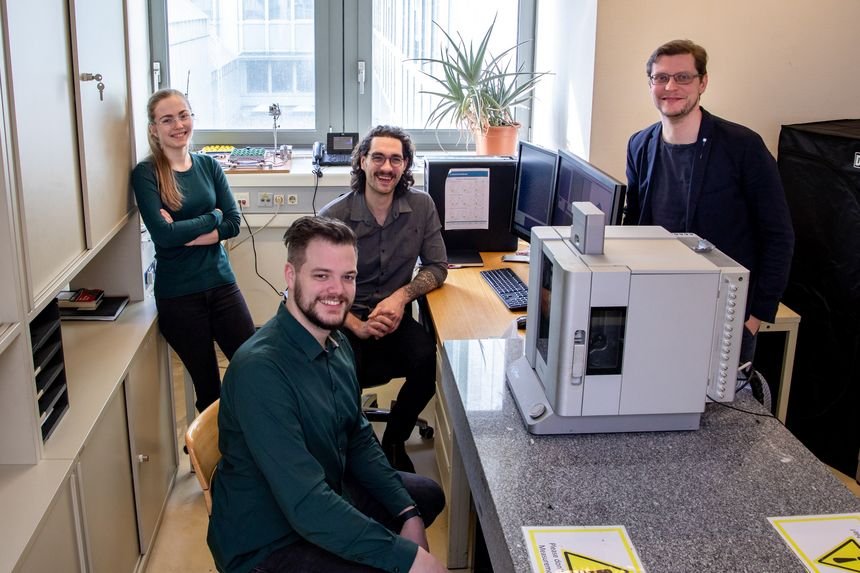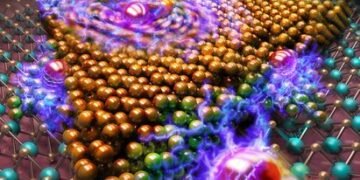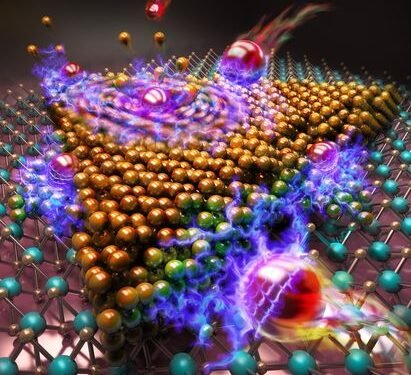A small amount of gold can be used by the ion bomb at the TU Wien (Vienna) – surprisingly, the most important thing is not the strength of the effect but the Highly charged ions also dissolve gold nanoparticles.
Normally, we have to make a choice in physics: Whether we treat large objects – such as metal plates and their properties, or small objects – such as individual atoms. But there is also a world in between: the world of small but not small things, in which the effects of the macroscopic world and the effects of the microscopic world play a role.
The experiment carried out at TU Wien is in this complex and in the middle: very small pieces of gold, consisting of a few thousand atoms and a diameter of tens of nanometers, are bombarded with highly charged ions . This makes it possible to change the shape and size of these gold coins in a targeted way. The results show: What happens in this process cannot be explained as the effect of a golf ball on a sand bunker – the interaction of ions and gold coins is much more subtle.

Energy transmitted by ion bombardment
“We work on multi-ionized xenon atoms. Up to 40 electrons are removed from these atoms, so they are charged with electricity”, explains Prof. Richard Wilhelm of the Institute for Applied Physics of the TU Wien. These highly charged ions hit small islands of gold placed in a mask – and then different things can happen: the islands of gold can become smooth, they can melt, they can even evaporate . “Depending on how our ions conduct electricity, we can trigger different effects,” says Gabriel Szabo, first author of the present paper, who is currently working on his thesis at one Richard Wilhelm.
These super-charged ions hit small pockets of gold at high speeds – at about 500 kilometers per second. Nevertheless, it is remarkably not the power of influence that changes the island of gold. This process is very different from the impact of a golf ball on a pile of sand, or the impact of a tennis ball on a perfectly decorated birthday cake.
“If you use the same power to light xenon atoms without charge on the gold island, the gold island remains unchanged,” says Gabriel Szabo. “What matters is therefore not the kinetic energy, but the electric charge of the ion. This bill is energizing and puts it right where it will have an impact.”
Changes in electronic systems
Once these positively charged ions hit the gold nano coins, they remove electrons from the gold. In large amounts of gold, this will not have a significant effect: gold is an excellent conductor, electrons can move freely, and will be transferred from other areas of gold many electrons. But nano-gold structures are so small that they cannot be considered as endless electron storage. It is precisely here that one enters the middle of the world between macroscopic machines and small clusters of atoms and their properties at the nanometric scale.
Richard Wilhelm explains, “The energy of the ion is transferred to the gold, so the electronic structure of all the nano-gold is unbalanced, the atoms start to move, and the crystal of the metal is destroyed yes,” explains Richard Wilhelm. . “Depending on how much you apply, it can happen that the nano-gold pieces melt (Highly Charged Ions also Dissolve Gold Nanoparticles) or fall off.”
The effect of the ion bomb can also be studied under the atomic microscope: Depending on the charge of the ion, the height of the gold coin is reduced or reduced, says Gabriel Szabo: “Just like the type we plan, we can control. The impact of ions and gold – not by the speed we give our projectiles, but by their charge.”
A good control and a deep understanding of these processes are important for creating different kinds of nanostructures. “It is a method that allows you to selectively edit the geometry of especially small structures. It is interesting for creating microelectronic components as it is for the so-called quantum dots – small structures that provide opportunities for well-designed electronic or optical effects due to their physical limitations,” explains Richard Wilhelm.
And it is another explanation in the world of small but not small matter – in the world involved in many areas between quantum physics and solid state physics, which can only be understood by to take into account the quantum and the various phenomena at the same time.
Source: TU Wien





































